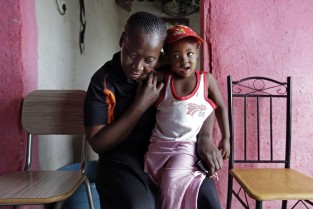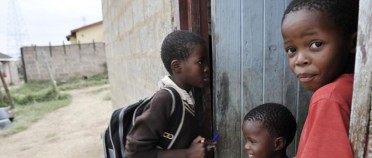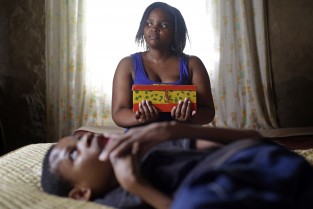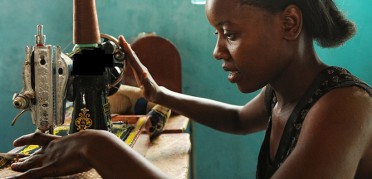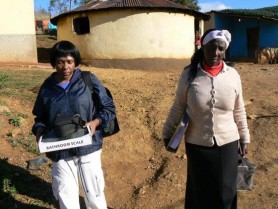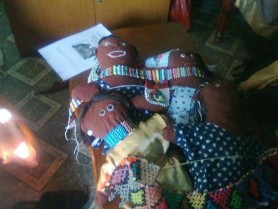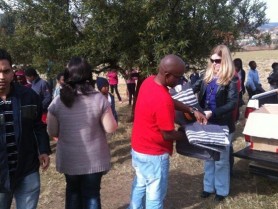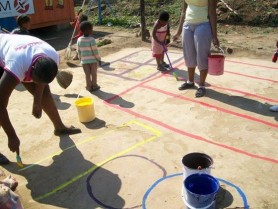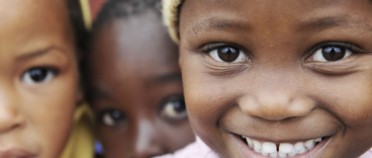Thandanani Childrens Foundation
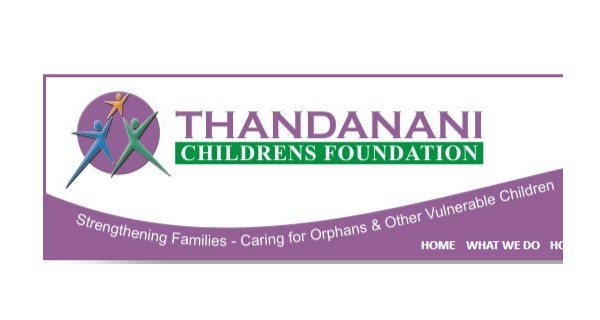
| Monday | 08:00 am - 05:00 pm |
|
| Tuesday | Open Now | 08:00 am - 05:00 pm |
| Wednesday | 08:00 am - 05:00 pm |
|
| Thursday | 08:00 am - 05:00 pm |
|
| Friday | 08:00 am - 05:00 pm |
|
| Saturday | 08:00 am - 05:00 pm |
|
| Sunday | 08:00 am - 05:00 pm |
|
| Public Holidays | 08:00 am - 05:00 pm |
|
REVIEWS
PHOTO GALLERY
ABOUT US
What we do
Founded in 1989, Thandanani Children’s Foundation is a registered non-profit organisation that facilitates community based care and support for orphans and other vulnerable children in Kwa-Zulu Natal. We have a well-established system of community based care and support for orphans and their families that involves capacitating and supporting community based Fieldworker teams to respond to the basic material, physical, cognitive and emotional needs of orphans and vulnerable children (OVC) through our Family Stregthening Project.
Our Vision
Our vision is that communities provide safe and nurturing environments for orphans and other vulnerable children (particularly those affected and infected by HIV/Aids) within their communities of origin.
Our Mission
Our mission is to build the capacity of communities and families in the Midlands of KwaZulu-Natal, South Africa to respond to the basic material, physical, cognitive and emotional needs of their orphans and vulnerable children (OVC).
Our Purpose
Our purpose is to improve the well-being of orphans and other vulnerable children and their families through a range of public benefit activities, including health and welfare services, provided in a non-profit manner and with an altruistic or philanthropic intent.
Our Objective
Our objective is to enhance the material, physical, cognitive and emotional well-being of orphan’s and other vulnerable children and their caregivers through a structured and time-limited system of family strengthening, care & support.
SERVICES
This page will introduce you to our Family Strengthening Project. The video on the right gives an overview of our work while the information and video’s below provide more detail of each component element of our model.
Material Well-Being
The majority of the caregivers of the children we work with are females with little or no formal education. Many are also pensioners. As a result, these caregivers are usually unemployed and have very limited opportunities for income generation. In many instances, they do not have the resources to meet the most basic needs of the children in their care or even to obtain the basic documentation required to apply for state grants for which they qualify. To address some of these challenges Thandanani undertakes a range of activities aimed at addressing the basic material needs of these households.
Physical Well-Being
Many of the children we work with have been orphaned as a result of HIV & Aids. Some may themselves have contracted the virus through mother to child transmission while others are living in households with adults who are HIV positive. In instances, the health of children is compromised by poor nutrition, inadequate health awareness on the part of their caregivers, or because caregivers cannot afford the transport costs involved in accessing health care services for the children in their care. To address some of these challenges Thandanani provides a range of health services to households on our database.
Emotional Well-Being
Many of the children we work with have experienced significant hardship and loss. Many have experienced the loss of their childhood in having to care for their dying parents and most have experienced the hardship of a lack of income, shelter, food, care and love following this loss. Similarly, many of the caregivers on Thandanani’s database have experienced significant hardship and loss while carrying significant burdens of care. Many are elderly “Gogo’s” who care for their orphaned grandchildren; others are members of the extended family or local community members who have taken on the responsibility of caring for orphans in addition to their own children.
Cognitive Well-Being
It is well known that to secure the future of an individual one of the best investments that can be made is in their education. When families are unable to provide for the basic needs of their children, or when children are rendered vulnerable by the loss of one or more of their parents or a similar trauma the risk of children dropping out of school is significantly increased. To reduce this risk Thandanani undertakes a range of activities aimed at supporting the education of the children on our database.
Evaluation
A recent evaluation had this to say about our work:
Thandanani’s Family Strengthening Project and its component elements do move families from a state of vulnerability to increased stability and self-reliance; the package of services offered does make a meaningful and sustainable difference; and children, their caregivers and the family as a whole do benefit significantly from participation in the programme. TCF’s model is an excellent example of OVC care at community level.
How we do it
The following criteria are used to identify vulnerable households in the communities in which we work:
- There is at least one orphan under the age of 18 living in the household, or
- The biological parent(s) have abandoned the child(ren) (their whereabouts being unknown), or
- The parents/caregiver is terminally ill, or
- The caregiver/parent is physically, mentally or emotionally incapable of providing appropriate care to the child(ren)
AND
- The household income is inadequate to meet the basic needs of the child(ren), or
- The care given by the parent/caregiver is inappropriate (i.e. there is physical, sexual, emotional or economic abuse, neglect and/or exploitation), or
- The child(ren) displays emotional and behavioural difficulties that necessitate support.
Once identified as vulnerable in terms of these criteria, households are supported via a structured system of household intervention that is designed to systematically address their basic material, physical, cognitive and emotional needs and move them from a state of vulnerability to increased stability and self-reliance within a two to three year period. With this “movement” of households through the system, Thandanani is able to redirect its existing capacity and resources to support new households as families become self-reliant and exit the system. This phased model of household support and development is outlined in the table below:
Stage 1: Identification (Months 0 to 3)
- Household baseline assessment
- Fieldworker assignment & fortnightly home visits
- Caregiver placement (needs based) and Document & Grant applications
- Emergency food relief (needs based)
- Provision of critical furniture & equipment (Needs based)
- School attendance & performance assessment
- Health assessment, education & testing
Stage 2: Support (Months 4 to 24)
- Monthly home visits
- Grant access & grant usage monitoring
- Emergency food relief (needs based & until grant secured)
- Food garden development & support (Voluntary)Caregiver access to Self-Help / Micro Finance groups (voluntary)
- School attendance & performance monitoring
- School uniform provision (need & criterion based)
- Home Based Early Childhood Development programs for Caregivers of children under 5 (Voluntary)
- Health monitoring & treatment compliance support (Voluntary)
- Emotional Well-being monitoring & access to individual or family counselling (voluntary)
- Family engagement in memory work (voluntary)
- Access to OVC life-skill program (voluntary)
- Access to Children’s support group (voluntary)
- Access to Caregiver support groups (voluntary)
Stage 3: Withdrawal (Months 25 to 36)
- Household baseline re-assessment
- Quarterly home visits
- Grant usage monitoring
- Ongoing access to Self-Help / Micro Finance groups (voluntary)
- School attendance & performance monitoring
- Health monitoring
- Emotional Well-being monitoring & access to individual or family counselling (voluntary)
- Food garden monitoring and phasing out
Why we do it
THE PROBLEM
Despite South Africa’s successful transition to democracy; poverty, illiteracy and HIV/AIDS continue to dominate the lives of millions of South African children and their families.
- 63% of all children in South Africa (approximately 11.6 million) and 75% of children in KwaZulu-Natal live in poverty with a per capita income below R923 per month;
- 30% of all children in South Africa and 37% of children in KwaZulu-Natal live in households where no adults are employed in either the formal or informal sector;
- 12% of all children in South Africa and 19% of children in KwaZulu-Natal live in households where there is child hunger (the lack of regular meals);
- 18% of all children in South Africa and 19% of children in KwaZulu-Natal live in overcrowded households;
- 16% of all children in South Africa and 21% of children in KwaZulu-Natal have been orphaned (either single or double);
- 30% of all pregnant women in South Africa and 40% of pregnant woman in KwaZulu-Natal are HIV positive (the highest prevalence rate in the country); and
- 3% of all children in South Africa and 4.2% of children in KwaZulu-Natal are HIV positive.
Children growing up in these circumstances are rendered extremely vulnerable by, amongst others:
- The demands of having to care for dying parents
- The trauma associated with the loss of their parents
- The loss and lack of material security (household income, shelter, security of tenure and physical protection)
- The lack of food security resulting in hunger and an increased risk of malnutrition
- The loss of childhood as a result of having to take on adult roles (e.g. provider and caregiver to younger siblings)
This results in:
- An increased likelihood of absenteeism, failure and premature exiting from formal schooling
- An increased risk of substance misuse and involvement in (survival) crime
- An increased vulnerability to exploitation (violence, sexual abuse, child labour etc.)
- An increased vulnerability to emotional and behavioural difficulties
- An increased vulnerability to HIV infection and teenage pregnancy.
Ultimately, this maintains the cycle of poverty and undermines the ability of the child to live a full and meaningful life.
Support us
Thandanani secures funding for its activities from a variety of both local and international donors on an on-going basis. Contracts vary from once off donations to long-term contracts. In addition, Thandanani has been diversifying its funding base by exploring social enterprise opportunities and monthly contributions from private individuals. While some exciting possibilities in these areas do exist, they are not likely to significantly contribute to our income in the immediate future. Consequently, Thandanani continues to look for partnerships with donor agencies, companies and private individuals to ensure funding for our activities.


